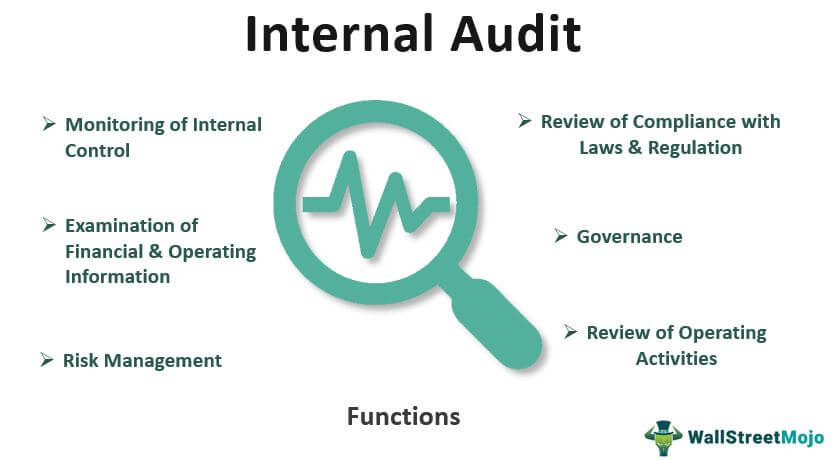Key Metrics to Measure the Success of your Internal Audit Department
The Importance of Measuring Success in the Internal Audit Department
When it comes to evaluating the effectiveness and efficiency of your internal audit department, it is crucial to have a set of key metrics in place. These metrics serve as indicators of success and help you assess the overall performance of your team. In this article, we will explore the key metrics that can be used to measure the success of your internal audit department and provide insights into how they can contribute to the growth and improvement of your organization.
Key Metrics for Assessing Operational Efficiency
In order to gauge the operational efficiency of your internal audit department, certain key metrics should be considered. These metrics focus on factors such as timeliness, productivity, and resource utilization. By analyzing these metrics, you can identify areas where improvements can be made to enhance the efficiency of your team.
Sub-Timeliness of Audit Completion
One important metric for assessing operational efficiency is the timeliness of audit completion. This metric measures how quickly audits are completed from start to finish. A shorter turnaround time indicates that your team is efficient in conducting audits, which allows for timely reporting and remediation of any identified issues.
Sub-Productivity Levels
Productivity levels are another crucial metric to consider when measuring the success of your internal audit department. This metric evaluates the amount of work completed by each auditor within a given timeframe. High productivity levels suggest that your team is effectively utilizing their time and resources to perform audits efficiently.
Sub-Resource Utilization
Resource utilization is an essential metric for evaluating operational efficiency in the internal audit department. It measures how effectively resources, such as staff members and technology tools, are utilized during audits. Optimal resource utilization ensures that audits are conducted with maximum efficiency and effectiveness.
Key Metrics for Assessing Risk Management
Risk management is a critical aspect of the internal audit function. By measuring key metrics related to risk management, you can gain insights into the effectiveness of your department in identifying and mitigating risks.
Sub-Risk Identification
One important metric for assessing risk management is the number of risks identified by your internal audit department. This metric measures the effectiveness of your team in identifying potential risks that could impact your organization\'s objectives. A higher number of identified risks indicates that your team is proactive in risk identification.
Sub-Risk Mitigation
Another key metric for measuring risk management success is the number of risks effectively mitigated by your internal audit department. This metric evaluates the effectiveness of your team in implementing controls and measures to minimize or eliminate identified risks. A higher number of mitigated risks demonstrates the impact and value of your internal audit services in protecting your organization.
Sub-Compliance with Regulatory Requirements
Compliance with regulatory requirements is a fundamental aspect of risk management. By measuring this metric, you can assess the extent to which your internal audit department ensures compliance with applicable laws, regulations, and industry standards. High compliance levels indicate that your team is diligent in adhering to relevant requirements.
Key Metrics for Assessing Stakeholder Satisfaction
The satisfaction of stakeholders, such as senior management and board members, is crucial for the success and credibility of your internal audit department. By measuring key metrics related to stakeholder satisfaction, you can gauge how well your team is meeting their expectations and delivering value.
Sub-Audit Quality
Audit quality is a vital metric for assessing stakeholder satisfaction. This metric evaluates the thoroughness, accuracy, and reliability of audit findings and recommendations. High-quality audits provide valuable insights and recommendations that enable stakeholders to make informed decisions.
Sub-Communication Effectiveness
Effective communication between the internal audit department and stakeholders is essential for ensuring clarity and understanding of audit findings and recommendations. Measuring the effectiveness of communication channels, such as reports and presentations, can provide insights into how well your team is engaging with stakeholders.
Sub-Stakeholder Feedback
Another important metric for assessing stakeholder satisfaction is the feedback received from senior management and board members. Regular feedback sessions or surveys can help you gather valuable insights on the perception of your internal audit services and identify areas for improvement.
Key Metrics for Assessing Professional Development
Continuous professional development is crucial for the growth and success of your internal audit department. By measuring key metrics related to professional development, you can ensure that your team is equipped with the necessary skills and knowledge to perform their roles effectively.
Sub-Training Hours
Training hours is a metric that measures the amount of time dedicated to professional development activities by each member of your internal audit department. Higher training hours indicate a commitment to ongoing learning and skill enhancement within your team.
Sub-Certifications Attained
Certifications attained by your internal auditors are another important metric for evaluating professional development. Certifications demonstrate expertise in specific areas of internal auditing and enhance the credibility and trustworthiness of your team.
Sub-Knowledge Sharing
Knowledge sharing within the internal audit department promotes collaboration and continuous learning. Measuring this metric can help assess how effectively knowledge and best practices are shared among team members, fostering a culture of learning and improvement.
Key Metrics for Assessing Value Addition
Finally, assessing the value addition provided by your internal audit department is crucial to demonstrate its impact on organizational success. Measuring key metrics related to value addition helps showcase the tangible benefits your team brings to the organization.
Sub-Cost Savings
Cost savings achieved through operational improvements identified by your internal audit department is a valuable metric for demonstrating value addition. This metric quantifies the financial benefits generated from audit recommendations or process enhancements implemented as a result of internal audits.
Sub-Process Efficiency Improvements
Measuring process efficiency improvements resulting from internal audits provides evidence of the value your team brings to the organization. This metric evaluates the impact of audit recommendations on streamlining processes, reducing waste, and improving overall operational efficiency.

Sub-Risk Mitigation Effectiveness
The effectiveness of risk mitigation efforts is another key metric for assessing discover this value addition. This metric measures the reduction in potential financial, operational, or reputational risks achieved through the implementation of audit recommendations.

In conclusion, measuring the success of your internal audit department is crucial for continuous improvement and organizational growth. By using key metrics related to operational efficiency, risk management, stakeholder satisfaction, professional development, and value addition, you can gain valuable insights into your team's performance. These metrics provide a holistic view of the effectiveness and impact of your internal audit services and help guide future strategies and initiatives. Remember to regularly review and analyze these metrics to ensure ongoing success in your internal audit department.